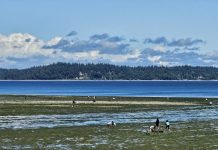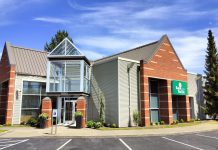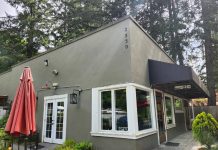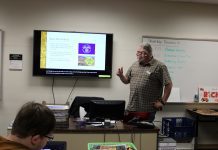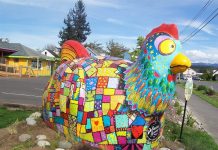About three miles southeast of Acme, near the snaking banks of the Nooksack River’s South Fork, you’ll find Osprey Hill Farm.
The organically-focused family farm produces a range of crops — from culinary herbs and berries to hothouse tomatoes — while also raising poultry and livestock. Nearly a quarter of a century into operation, the farm recently took a big leap forward: increasing their land base by 54 acres by working with Whatcom County’s Conservation Easement Program (CEP) and Whatcom Land Trust.
The Conservation Easement Program is a voluntary program that protects farmland from subdivision and development by compensating landowners for their unused development rights. Created in 2002 to protect farmland, the CEP expanded its mission in 2018 to include the protecting of working forestland and areas of ecological importance. To date, about 2,000 acres of local farm and forestland have been protected, ensuring these lands stay in working production forever.
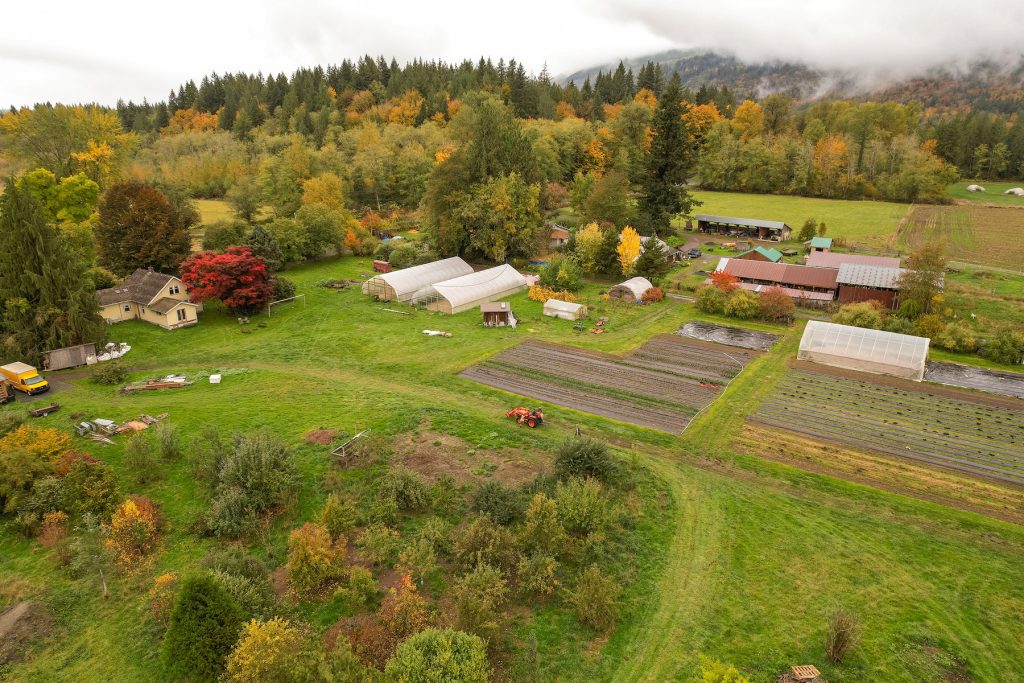
Land Preservation and Protection
Osprey Hill’s acquisition of 54 acres was part of a project that took multiple partners and years to complete.
Alex Jeffers, The Trust’s conservation director, says the acreage was purchased in 2014 from a company that grew poplar trees and was part of a multi-property purchase in the South Fork Valley area. The Trust purchased the land through a Whatcom Community Foundation grant, with the goal of protecting riparian areas along the Nooksack River and its tributaries before transferring the land back to local farmers.
“We’re big believers that farming and habitat conservation, and water quality and quantity goals, aren’t at odds with each other,” Jeffers says. “We wanted to put projects together that protect those environmental resources and allow folks to allow continue growing food and feeding our communities and contributing to our economy.”
After purchasing the land, the Trust partnered with the Nooksack Salmon Enhancement Association (NSEA) to restore the creek that runs through the property, improving habitat and water quality. When it came time to transfer the rest of the acreage, The Trust partnered with the County’s CEP program, which removed the 54 acres’ single development right. The acreage can now never be used for residential or commercial building, other than for agriculture-based structures associated with farming.
Removing the development right lowered the property’s land value, making it accessible and affordable to Anna and Geoff Martin, Osprey Hill’s owners.
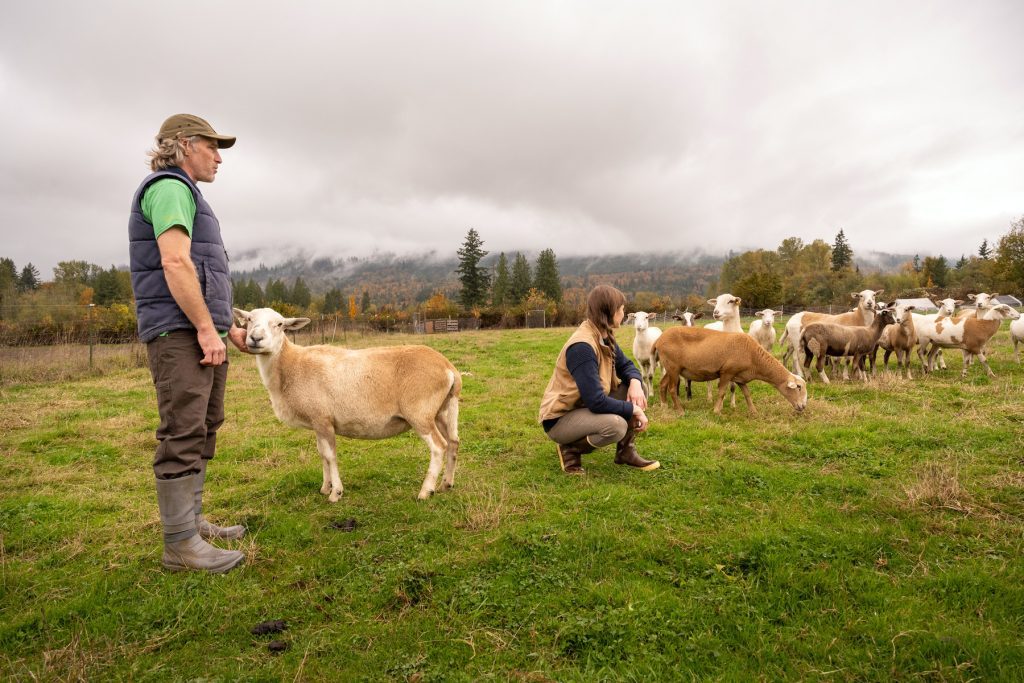
Jeffers says this project was the first Whatcom Land Trust has done using what’s called the ‘buy-protect-sell’ model, and it’s one they hope to continue using in the future.
“It really does feel like a win-win-win-type situation,” he says of such projects. “It was great working with Geoff and Anna. Their family is doing great farming, and we were glad we were able to help expand their operations. We’re excited to be able to do more projects like this, as we have the opportunity.”
Economic Opportunity
For the Martins, who chose farming over potential careers in medicine after they met in college, expanding their farm from 15 to 70 acres would have been financially impossible without the CEP.
“For farmers, one of the biggest barriers to entry and to growth is the cost of the farmland itself,” Anna Martin says. “In the last five years, land value has increased pretty significantly.”
When the acreage they eventually purchased in 2021 first hit the market, Martin says she and her husband would drive past it and wish it was something they could afford. Eventually, curiosity got the better of them, and they called Whatcom Land Trust to begin conversations that convinced them the land was actually affordable: the loss of the property’s development right lowered the land’s value by $100,000. Osprey Hill’s purchase was also assisted by a United States Department of Agriculture (USDA) loan, which required a rigorous application process but provides a low interest rate.
As for how Osprey Hill plans to use their new land, a large part of the farm’s operation is pasture-raised meats. Martin says they intend to use most of the acreage for their poultry and livestock business. In addition to raising animals, the farm also has a licensed butchery for poultry and hares and processes the meat of nearly 40 Western Washington farmers and homesteaders in addition to their own.

The Martins also recently planted thousands of trees and shrubs to act as a hedgerow around their farm, helping sustain the area’s bird and pollinator population and protecting the farmland from wind events. Additional rows of trees have been planted on pastureland to provide shade for livestock, Martin says.
The use of the ‘buy-protect-sell’ model championed by Whatcom County CEP, she adds, is one that may come to benefit many farms just like theirs.
“It really is key to the future of farming,” she says. “Having exponential growth on our pasture lands was hugely important in our ability to expand our business.”
Sponsored
















